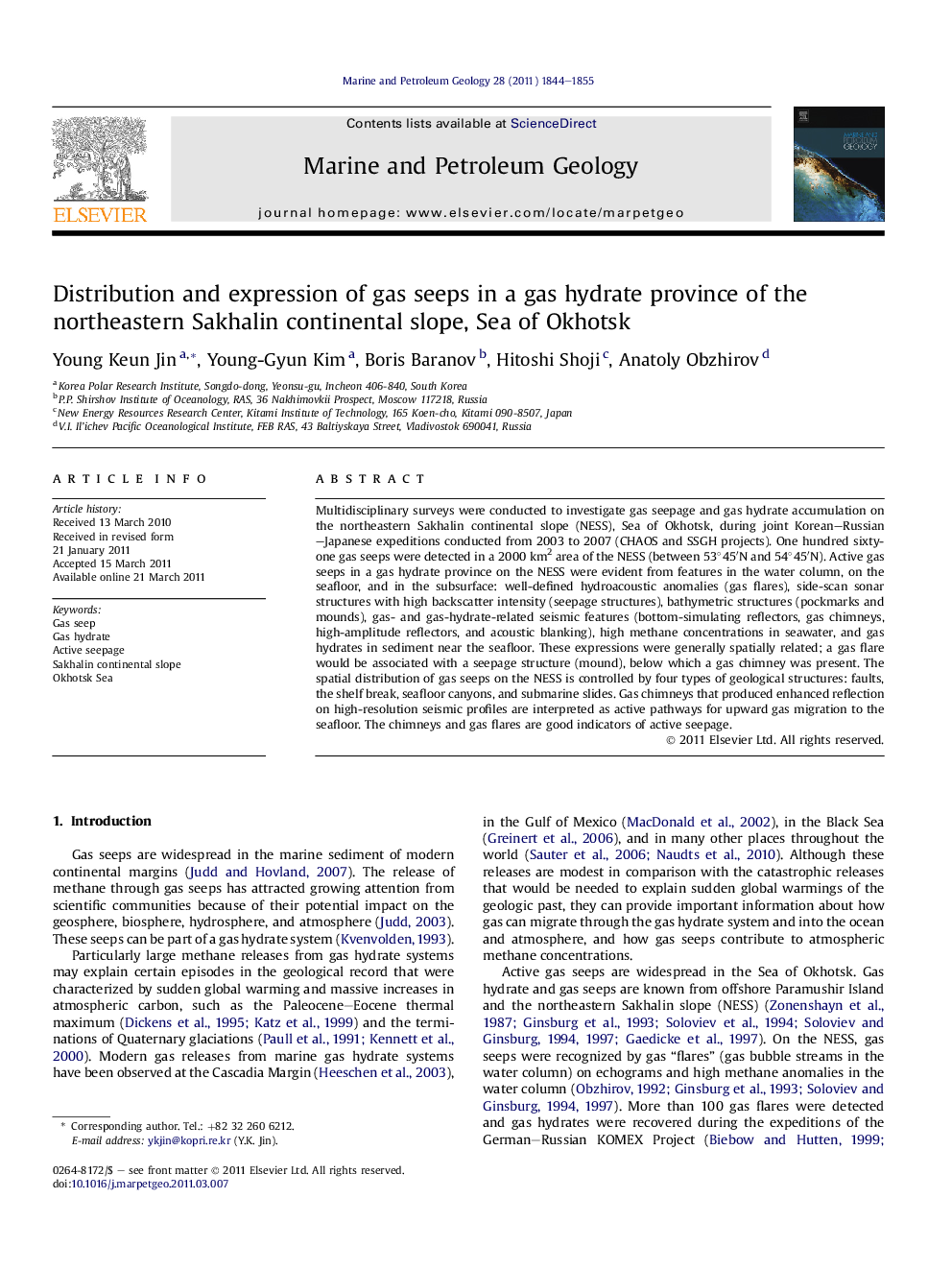| Article ID | Journal | Published Year | Pages | File Type |
|---|---|---|---|---|
| 4696122 | Marine and Petroleum Geology | 2011 | 12 Pages |
Multidisciplinary surveys were conducted to investigate gas seepage and gas hydrate accumulation on the northeastern Sakhalin continental slope (NESS), Sea of Okhotsk, during joint Korean–Russian–Japanese expeditions conducted from 2003 to 2007 (CHAOS and SSGH projects). One hundred sixty-one gas seeps were detected in a 2000 km2 area of the NESS (between 53°45′N and 54°45′N). Active gas seeps in a gas hydrate province on the NESS were evident from features in the water column, on the seafloor, and in the subsurface: well-defined hydroacoustic anomalies (gas flares), side-scan sonar structures with high backscatter intensity (seepage structures), bathymetric structures (pockmarks and mounds), gas- and gas-hydrate-related seismic features (bottom-simulating reflectors, gas chimneys, high-amplitude reflectors, and acoustic blanking), high methane concentrations in seawater, and gas hydrates in sediment near the seafloor. These expressions were generally spatially related; a gas flare would be associated with a seepage structure (mound), below which a gas chimney was present. The spatial distribution of gas seeps on the NESS is controlled by four types of geological structures: faults, the shelf break, seafloor canyons, and submarine slides. Gas chimneys that produced enhanced reflection on high-resolution seismic profiles are interpreted as active pathways for upward gas migration to the seafloor. The chimneys and gas flares are good indicators of active seepage.
► We describe hundreds of gas seeps and associated features on the NE Sakhalin slope. ► Active seeps were evident from associated features which were generally clustered. ► The distribution of gas seeps is controlled by four structural elements.
